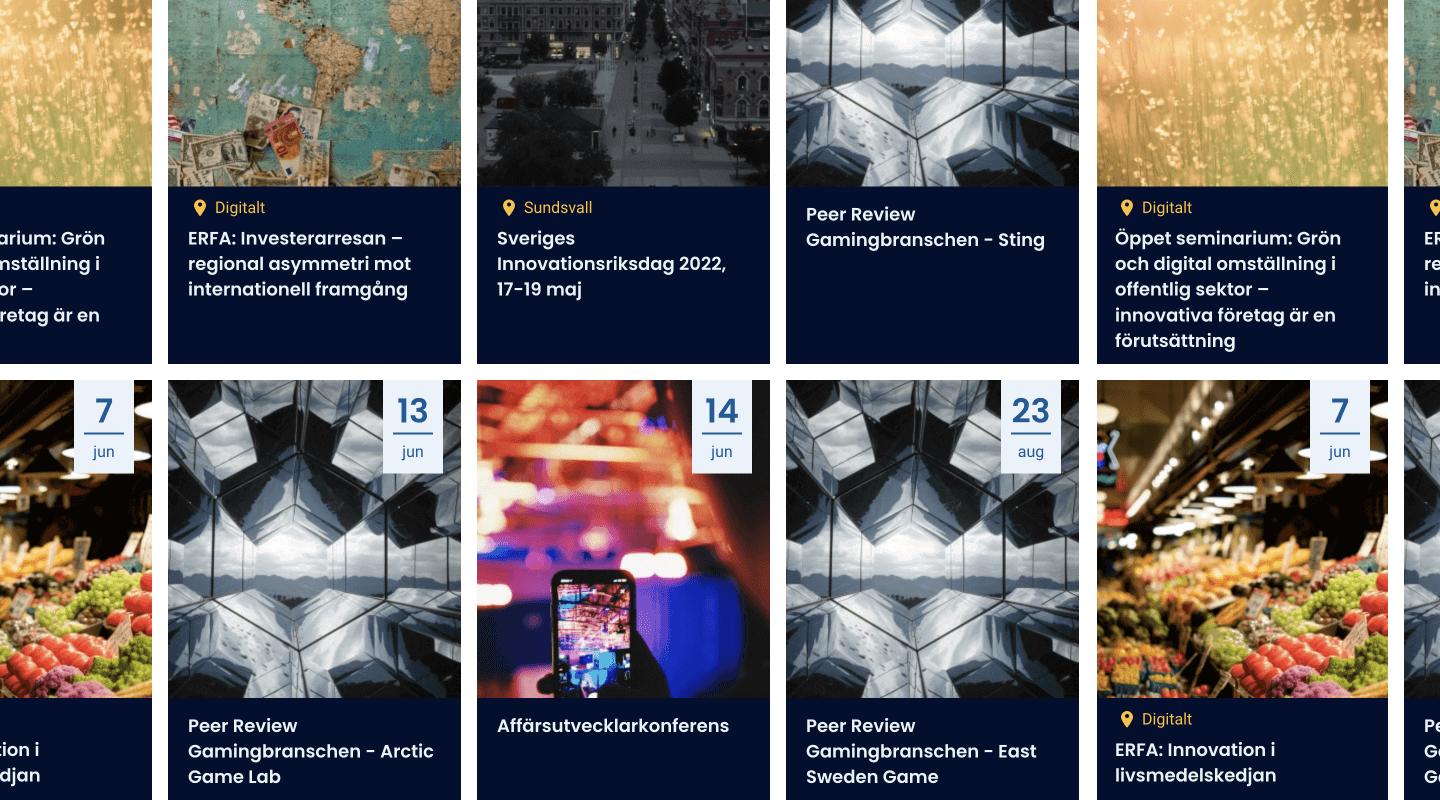
How to grow and maintain a Community
Step into the dynamic everyday life of Ulrica Gellerstedt Witsch, the Communications Manager at SISP, Sweden's incubators and Science Parks association. With a network that stretches across 65 members, 5,000 companies, and around 72,000 employees, Ulrica's role is integral to this vast community

What does it mean to be the Communications Manager at SISP
My mission is to talk about what SISP* does and communicate it externally to our environment, but also to our members. For us, it is important to work closely with our members.
Can you tell us a bit more about how you work?
I work broadly on creating communication for our various projects, ensuring our members receive important and relevant information, driving SISP's network for communicators, and also working strategically and long-term with SISP's brand.
In terms of whom we want to reach, we have different strategies, where the content is also decisive. For example, when it comes to promoting our events, we do this via the website and on social media - mainly on LinkedIn. That's where we're currently focusing most of our effort on our largest event - Sveriges Innovationsriksdag**.
When it comes to the members, we use newsletters that go out every other week or our internal Facebook groups where members are divided by job categories such as business developers, communicators, operational managers, etc. Something I appreciate is that our website is connected with the events, newsletters, and member lists, everything is in the same place. It's a good solution.
Personal connections: The heart of our success
When it's important that we get specific people to our events, we often invite them via email. For example, last autumn we worked on developing an international strategy, a task where it is important to have the members involved. The project manager then sent out emails personally, which resulted in very high attendance, and the work was well-anchored among the members.
As mentioned, we are a trade association and it's usually very easy to get our members involved. My role is to identify what communication is needed in various projects based on the requirements that exist and the goals that are to be achieved.
Streamlining communication in a diverse Industry
A major challenge for us is that our industry is extremely complex, and it can be difficult to explain what we and our members do. In addition, we're a relatively small trade association, so it's important to work smartly with the resources we have and ensure that the tools we use work smoothly and make everyday life easier.
This can include maintaining our lists, which we send out via Snowfire. There are many members we need to keep track of and keep updated. Who has started and who has left among our members, who should be included in our Campaigns. Here it's crucial that the technology works. There's so much information, and it's important to keep everything relevant.
Tailored website
Our website is set up according to a structure that we have created ourselves. This could include news that our members, financiers, and stakeholders need to know. We blog our news and think it should be easy to find information about us, our projects, our members, and what is currently happening. We run all events through our website, and they are uploaded by our event manager, so we cooperate on the site.
Membership list on a map
On our website, we also have all the information about our members, with subpages for each member. We often get questions about members, and due to GDPR, it is good to be able to refer to the website where there are contact details for all members. By hovering over the name of the member, you can also see where in Sweden they are located. However, I would like the marking on the map to be clearer.
Social Media
We work to distinguish between our website and our social media. We blog our news in formats that are adapted for social media and link to the blog posts on the website to generate more traffic there. A challenge in this when you don't have a large team is being present in multiple channels. When it comes to social media, we have chosen to focus primarily on LinkedIn, but we also use Facebook and Instagram on occasion.
There are many events created during a year
Something that feels exciting is working with your new platform, Magnet. It is easy to work with the blocks and get a neat structure, and it is easy to work together. I can invite colleagues who immediately or after a short walkthrough understand how the page works and what needs to be done. I must say that here I experience a difference with Snowfire compared to other event platforms that we have tried.
Our biggest event is Sweden's Innovation Day (SIR)**, which this year is held in Sundsvall from 17th to 19th May. What I appreciate about the solution we have through you is that every year we can build the event on the web as we want and in that way also develop the SIR brand over time.
Something that we managed to do for this year that we really appreciate is getting a widget from SJ that we could easily insert on the website to book a train ticket directly. It feels professional and well worked out.
What are your best tips for others who, like you, are responsible for building and maintaining a community?
Before you start - do the groundwork, create a strategy for what you want to achieve and how it will be implemented:
- Write down what the goal is for the website - what do you want to achieve?
- Define your target group/groups - who do you want to reach? Write these down and limit the number. (For example, we have identified members, financiers)
- Make a strategy for what will be displayed on the website and why it is being posted
How has your experience been working with Snowfire?
I appreciate that everything is in the same place, that everything is connected; website, events, newsletters, and our member lists. I would recommend Snowfire to others, especially Magnet. It is easy to use, hard to make a mistake, and it's easy to make it look good.
*SISP
Swedish Incubators & Science Parks (SISP) is an industry association with national coverage. SISP's members encompass over 5,000 companies with 72,000 employees.
The focus is on growth in knowledge-based companies. SISP's 65 members manage more than 70 creative environments, offer business development, work with clusters, industrial project development arenas, seed capital funds, and have close collaborations with industry, public sector, universities, and institutes.
**Sveriges innovationsrikdsdag - The meeting place for regional, national, and global innovation. Sweden's Innovation Day - SIR is the annual conference of the Swedish industry association SISP (Swedish Incubators & Science Parks).
SIR brings together the core of Sweden's national and regional actors from innovation environments, politics, business, academia, and society. Those who work to promote, strengthen, and develop innovation, business, and policies based on current societal challenges. In recent years, SIR has addressed challenges such as innovation and competitiveness, circular economy, and digital transformation.